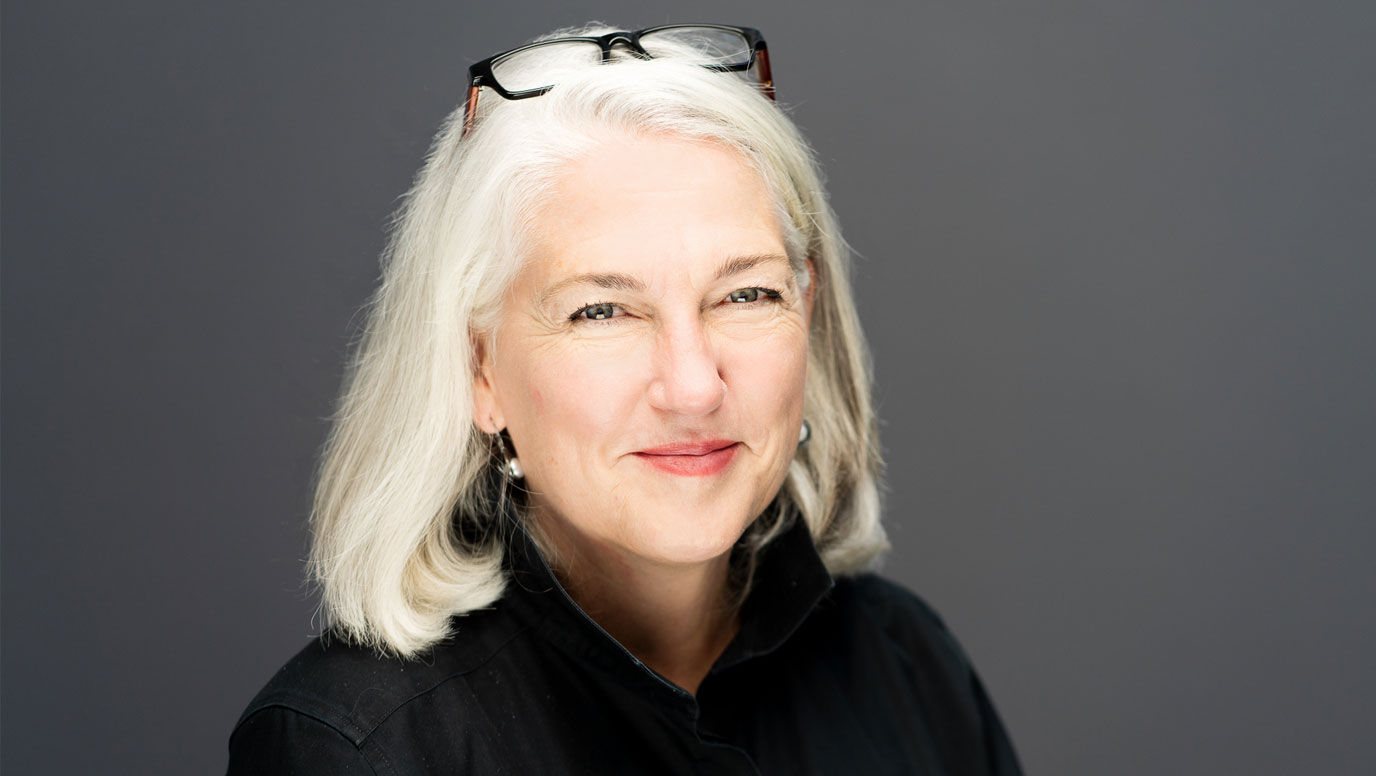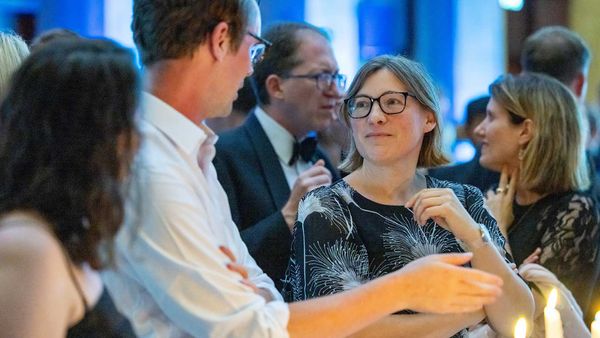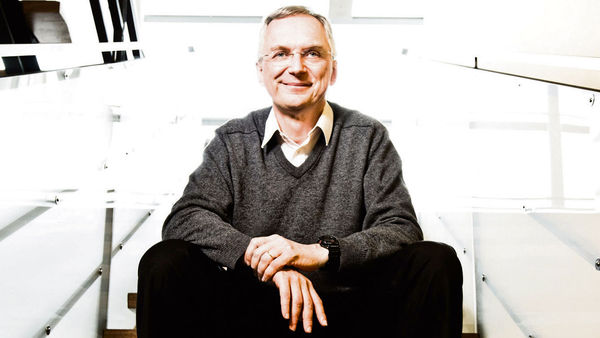Willey recalls challenging baptism as first chief of Cambridge Enterprise

When you took the job at CE what was the climate, appetite and track record for commercialising science & technology?
I found it a good and welcoming environment for commercialising science & technology. There were already plenty of successes in physical science, engineering, and computer science especially in venture creation (Andy Hopper was already a serial entrepreneur and several other faculty had founded companies). The life science efforts and interest were emerging with many of the serial entrepreneurs on the tech side supporting, funding and encouraging new ventures at the interfaces of IT and life science.
There were also many good intellectual property licensing agreements with established companies. The team at the University of Cambridge that transferred into Cambridge Enterprise were smart, resourceful and focused on doing their work in support of faculty who asked for their help in using commercial channels to deliver the results of the research and scholarly works to the public. They were working with a lot of uncertainty: evolving policy, and sometimes volatile process of setting up and getting approval for Cambridge Enterprise and the longish search for the Chief Executive.
They pulled together at a difficult time and negotiated and closed over 60 meaningful commercialisation arrangements the year everything was in flux. I think I can name every one of those team members (it was a small and determined team) and when I think of how they pulled together and made this happen it still gets me. There were so many things they couldn’t do while things were in flux so they figured out together what they could do and did it.
Were people within the University aware of what was possible?
There were key people in the University who were aware, which I believe was why they were working to clarify rights to the results of these important research and scholarly works, especially in the life sciences where certain types of intellectual property protection are needed to create an incentive to invest in these risky and profoundly important discoveries.
Was there money – or resources – in place to succeed?
Internally, the money for Cambridge Enterprise was not in place. I was told when interviewing and moving to agreement to join the team that specific resources were available. It turned out they were not. They were proposed, but not authorised by the required governing bodies within the University.
It took months, with the help of Tony Minson, Ian Leslie, Andrew Reid, Steve Young and others (such as Helen Jackson and Jo Cheffins, leaders in the general counsel’s office, who worked hard to keep me out of trouble) to move it through the daunting decision paths at the University of Cambridge. The financial model for Cambridge Enterprise was also challenging and the scope of work on the wish list was well beyond the resources available or provided.
The external resources were good: government funding for programs like the Challenge Funds, active angle networks and a growing number of venture firms active in (with Amadeus setting the example), or thinking they wanted to be, in early-stage spin outs. It was important that CE seed funds were seen as complementary to these investing resources and certainly not competing as we were focused on putting our small seed funds to work in a way that would attract smart money and management, and feedback from these group informed how we invested.
We identified that there was serious financing risk at the early stage and trying to facilitate early syndicates of smart money seemed like a good idea (and was fun). CE seed funds investment committee meetings were great and I loved working with that committee and with our chair of that committee, John Lee – and Bill Matthews as head of our seed funds and then Dr. Geraldine Rodgers and then Dr. Anne Dobree.
We typically had equity in around 80 companies at any one time while I was there and under Geraldine’s leadership worked with each one to see how we could support their success. We were also open to being bought out in subsequent oversubscribed rounds so these returns could be reinvested – a practice that continued with Anne.

How did you go about putting your successful model in place?
Listening, and asking a lot of questions to a lot of people and listening some more. Then using what I learned to develop a plan. I met with over 80 people before I started and in the first few weeks after joining the University. These were staff members, scientists, investors, lawyers, founders and importantly folks who were not keen on the new IP policy and the founding of Cambridge Enterprise.
Andy Hopper was generous in explaining concerns as was Jack Lang. I took my business plan to Jack and he gave me some very tough feedback. He was a huge help and got me involved in one of the active angel networks.
Richard Stibbs let me know early on his concerns about what I was there to do. He was probably responsible, at least in part, for knocking us for the University server (per the remit of the IT syndicate). But we sorted it out eventually with Ian Leslie’s help and we learned we had not communicated well enough that we were there for the University of Cambridge: a limited company, limited by shares with only one share holder: The University of Cambridge. We needed to show and communicate that we were not “other”.
I continued this process of asking and listening for my time there and some of the important discussions were during college dinners. (In addition to dining rights at Downing, courtesy of Richard Stibbs, and debate continued. I was also grateful to be a bye-fellow at Christ’s College and a “business affiliate” at Hughes Hall.)
One of the things I felt was that you don’t tell the smartest people in the world what to do. So shepherding in the new IP policy, under which the University owned IP in the first instance, we managed this as a choice. (It was already the case that the University owned most IP s most of the research was funded by the Government and third parties under agreements which provided for this).
If the inventors wanted to manage and own inventions and all agreed we would allow them to “opt out”. Interestingly, very few did. And those that did and started companies we supported them with investment through our seed funds. Importantly, we were not the technology police. We were there as business agents for the scientists.
I was asked during one of the many reviews of how were doing, how did we keep things we should own from leaking out (instead of someone formally opting out)? I believed it was a self-correcting situation in an environment with sophisticated investors. Investors need to see clear title. So, if the IP was valuable, we would be involved in sorting out clear title.
Obstacles? Not having the funding from the University as promised. The IT syndicate bumping us off the server. Complex governance and decision paths within the University of Cambridge.
Can you chart progress/improvements?
I was reminded recently of the 5-year review of Cambridge Enterprise which does just that. In thinking back on the evolution and plan it was about empowering and supporting a team of capable caring people, making sure we had the culture and resources in place to do good work (me being the shit shield sometimes so they could move ahead when things were difficult), understanding early if something was problematic so we could address it/solve it early. Have clear guidelines/principles in making day to day decisions as we had many different constituents and stake holders each with different priorities.
We worked to operate like a small company reporting to a board of directors and working toward goals and objectives and being held accountable to these.
One of the key principles was that we were there to facilitate ideas reaching fruition in a way that had a positive impact. If commercial channels were needed to do that, then what was the best way to help? Patent filings to create an incentive to invest are key. So, too, finding commercialisation partners; finding management and investors to create a new company to take it forward; establishing clear title to assets so they could be transferred. Or sometimes just to get out of the way!
Cambridge had serial entrepreneurs like Andy Hopper who knew how to get things done and had the networks to do it. Patent filings rarely make sense for software and Andy partnered with experienced venture talent that could raise the funds needed. Another principle was to capture fair value, as this was reinvested to supporting innovative faculty at the University.

By the time you left how different was the performance and importance of CE to the startup/spinout culture of Cambridge and the UK?
That’s hard to say and I’m not sure I’m the one who can answer that. The start-up and spin-out culture was there when I arrived. I think my job was to make sure the University of Cambridge could be even more impactful through its engagement and to identify, support and enable initiatives that would help achieve this.
Main transactional areas at CE were seed venture investing, IP management and licensing, supporting faculty with their consulting services, although there were loads of other areas which we supported including student entrepreneurship. When I joined there were over 30 organisations in and around the University with enterprise, venture, entrepreneurship, etc in their titles and remits. They had for the most part evolved organically over time in response to unmet needs. Tim Minshall and others helped us identify non-bureaucratic ways to map and create synergies among these groups in practical and fun ways. We had to, on a case-by-case basis, determine what our role was with each of these groups.
About Teri Willey
Teri Willey, now Managing Director and Officer, Pathway to Cures in New York, was founding CEO of Cambridge Enterprise – the University’s commercialisation subsidiary – for five years from 2006 to 2011.
Teri joined the team at the National Bleeding Disorders Foundation in November 2022 to launch, lead and manage the new National Bleeding Disorders Venture Fund, LLC. The Fund does business as the Pathway to Cures (P2C) focused on equity investments in companies developing cures and therapies for inheritable blood and bleeding disorders. Teri also serves an advisor to Royalty Pharma, chair of the Oncode Institute International Advisory Board and a member of the Spinouts Denmark Advisory Board. Her personal investing efforts include a limited partnership in Sixty8 Capital and serving as an investing member of Portfolia funds.
Teri has been in the business of commercialising early-stage research results for nearly 40 years and in addition to the above was the founding managing director of IU Ventures’ Indiana Philanthropic Venture Fund, a senior executive for business development for Cold Spring Harbor Laboratory, Mount Sinai School of Medicine in NYC, founding chief executive of Cambridge Enterprise Ltd in Cambridge England and a co-founder of ARCH Development Partners an early-stage Midwest venture fund.
Her career has been about starting, re-organising and leading technology transfer programs, and launching new early-stage funds that invest in science-based ventures and underserved founders. She has been an advisor to policy makers, universities and companies, is a past President of the Association of University Technology Managers (AUTM) and a former Bye Fellow of Christ’s College in Cambridge.
Her home base is in Bloomington, Indiana and Teri is a frequent visitor to Cambridge UK when not travelling to see children and grandchildren.

